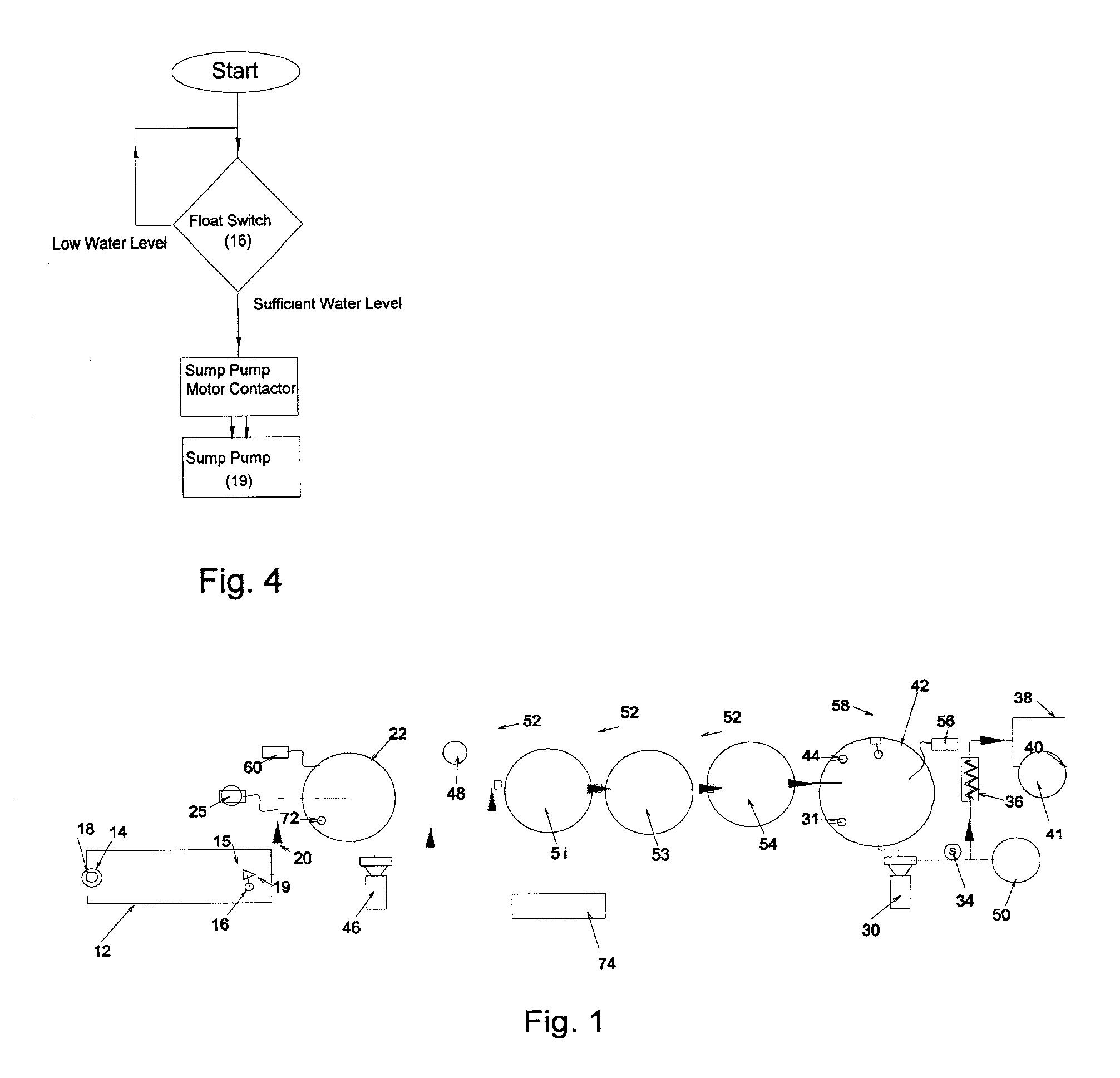Method and apparatus for recovery of waste water
a waste water and waste water technology, applied in the direction of filtration separation, multi-stage water/sewage treatment, separation process, etc., can solve the problems of limited recycling ability of wastewater, limited energy saving, and water only being reused
- Summary
- Abstract
- Description
- Claims
- Application Information
AI Technical Summary
Benefits of technology
Problems solved by technology
Method used
Image
Examples
Embodiment Construction
[0067] The EMI.TM. model 175 GPM system was first installed in February of 2001 and was up and running effectively March 1. As of Oct. 1, 2001, the system has recycled 13.5 million gallons of water and saved the owner over $100,000 in water, sewer, and energy savings. During the seven months of operation, it recycled 75% of the owner's laundry wastewater. FIG. 5 shows data of the recycle process and savings over a period of seven months.
[0068] Laboratory analysis of the wash water, taken Oct. 2, 2001, showed the results as shown in Table 1. Numbers are in mg / L; standard published analytical methods are used; and, "J" is estimated concentration. Sample #1 represents the waste water and Sample #2 represents the recovered product water from the EMI175 system of the present invention.
1TABLE 1 Draft Draft Detection Detection Result Result Limit Limit Analytical Sample #1 Sample #2 Sample #1 Sample #2 Method Analyte (mg / L) (mg / L) (mg / L) (mg / L) SM 5210 B Bio- 177 123 8 8 chemical Oxygen De...
PUM
| Property | Measurement | Unit |
|---|---|---|
| Fraction | aaaaa | aaaaa |
| Ratio | aaaaa | aaaaa |
Abstract
Description
Claims
Application Information
 Login to View More
Login to View More - R&D
- Intellectual Property
- Life Sciences
- Materials
- Tech Scout
- Unparalleled Data Quality
- Higher Quality Content
- 60% Fewer Hallucinations
Browse by: Latest US Patents, China's latest patents, Technical Efficacy Thesaurus, Application Domain, Technology Topic, Popular Technical Reports.
© 2025 PatSnap. All rights reserved.Legal|Privacy policy|Modern Slavery Act Transparency Statement|Sitemap|About US| Contact US: help@patsnap.com



